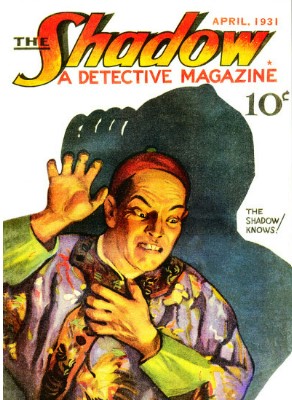Pulp Magazines, or pulps, were starting in the 1890s and published actively through the 1950 originating stories that introduced new ideas in science fiction, superheroes and adventure to readers. This guide provides an overview of how to evaluate your pulp collection, learn about how to identify key pulp issues books, understand pulp grading and compare the options for selling a pulp collection. You are also able to contact us to discuss your pulps and the best options for you:
How to evaluate your pulp collection
The first step in evaluating your pulp magazines is to organize them by genre (science fiction, adventure, jungle, weird menace, good girl, etc.) and then by title and issue. This will help you understand which aspects of the collection have more significance. A good resource to help evaluate your pulp collection the Bookery Guide to Pulps which provides an overview of pulp scarcity, key issues as well as estimates of value. Compared to comics, pulps come in many different sizes from standard to larger bedsheets and even smaller digest formats. Given the history of pulps (spanning over 60 years), there are quite a few different types of books, many publishers and a wide range of genres that are collectable.
The most collectable pulps tend to be in the weird menace (such as Terror Tales, Strange Tales, Dime Mystery and Thrilling Myster), superheroes (such as The Shadow, The Spider, Doc Savage and others), Spicy GGA books (Spicy Mystery, Spicy Detective, Spicy Adventures) and science fiction (Amazing Stores, Astounding Stories and others). There are a wide variety of popular characters, key storylines, renowned artists and writers in these issues that make them coveted by pulp collectors. In general values are based on a combination of significance, condition and rarity (how scarce the book is.)
Condition plays a key role in determining the value of pulps. Since they were printed on lower quality paper, pulps tend to require more careful storage and often tend to be lower grade (in the good or very good range.) This implies that pulps in the fine or better range (high grade for pulps) that retain gloss, good color, have minimal creases and have intact spines have much higher. When grading pulps keep in mind the overhang (the covers were printed taller and wider than the interior pages), so there will naturally be edges of the cover that curl slightly on the interior. As a result, pulp grading is slightly different from comic grading (although they share a common scale). It’s recommended that pulps are stored in bags and boards that fit them well, and that they are secured carefully in a cool, dark environment on shelves or carefully vertically in boxes.
Key Pulp Magazine Issues: Most Valuable Pulps
The most valuable pulps range across genres and reflect the historical significance in pulps introducing new creators, characters and storylines that would influence literature and culture in the future. Many of these key pulps are also rare, especially in mid-grade or better, which makes them even more valuable in better condition. This guide will provide an overview of the most valuable pulps – keep in mind there are many more pulps that have value beyond this list.
Doc Savage #1 March 1933 (first Doc Savage)
 The first issue of Doc Savage features an iconic cover of the “Man of Bronze”, who would be featured in a wide variety of books, comics, radio and films after his introduction in this 1933 pulp. There are many reprints of this issue (including other languages), so make sure the indica shows March 1933. Guide values for the pulp in higher grade are over $25,000 with potential for further appreciation over time.
The first issue of Doc Savage features an iconic cover of the “Man of Bronze”, who would be featured in a wide variety of books, comics, radio and films after his introduction in this 1933 pulp. There are many reprints of this issue (including other languages), so make sure the indica shows March 1933. Guide values for the pulp in higher grade are over $25,000 with potential for further appreciation over time.
All-Story Weekly October 1912 (first Tarzan)
 The most valuable pulp magazine is the iconic 1912 Tarzan of the Apes, which featured the first appearance of Tarzan in any medium by the legendary writer Edgar Rice Burroughs. In fact, this was Burrough’s first story under his real name and featured a classic cover by Clinton Bettee. This scarce pulp has fewer than 25 known copies and its guide value in higher grades is near $100,000.
The most valuable pulp magazine is the iconic 1912 Tarzan of the Apes, which featured the first appearance of Tarzan in any medium by the legendary writer Edgar Rice Burroughs. In fact, this was Burrough’s first story under his real name and featured a classic cover by Clinton Bettee. This scarce pulp has fewer than 25 known copies and its guide value in higher grades is near $100,000.
Amazing Stories August 1928 (first Buck Rogers)
 The iconic science fiction character Buck Rogers was first introduced in the August 1928 issue of Amazing Stories by Phillip Francis Nowlan in the story Armageddon 2419. While this pulp is more common than some other key issues, it remains coveted by sci-fi collectors. The character on the cover is actually from the story “Skylark of Space”, depicting a different character by E.E. Doc Smith.
The iconic science fiction character Buck Rogers was first introduced in the August 1928 issue of Amazing Stories by Phillip Francis Nowlan in the story Armageddon 2419. While this pulp is more common than some other key issues, it remains coveted by sci-fi collectors. The character on the cover is actually from the story “Skylark of Space”, depicting a different character by E.E. Doc Smith.
Weird Tales #1 March 1923(first issue)
 The first issue of Weird Tales debuted in March 1923, with a memorable Anthony Rud cover showing a giant creature and featuring the story “Thing of a Thousand Shapes”. Weird Tales innovated in storytelling for over 30 years, and many view this issue as iconic in broader literature. Guide values in higher grades exceed $20,000.
The first issue of Weird Tales debuted in March 1923, with a memorable Anthony Rud cover showing a giant creature and featuring the story “Thing of a Thousand Shapes”. Weird Tales innovated in storytelling for over 30 years, and many view this issue as iconic in broader literature. Guide values in higher grades exceed $20,000.
The Shadow #1 April 1931 (first Shadow)
 The Shadow went on to be an iconic character in film, radio, book and broader culture, beginning with April 1931 first issue. With a literary run over 18-years, the Shadow is considered a forerunner and inspiration to today’s superheroes in comics. Penned by the legendary Walter Gibson (pen name “Maxwell Grant”), the Shadow remains a key character in culture to this day. In higher grades, guide values exceed $25,000.
The Shadow went on to be an iconic character in film, radio, book and broader culture, beginning with April 1931 first issue. With a literary run over 18-years, the Shadow is considered a forerunner and inspiration to today’s superheroes in comics. Penned by the legendary Walter Gibson (pen name “Maxwell Grant”), the Shadow remains a key character in culture to this day. In higher grades, guide values exceed $25,000.
Compare the options for selling pulps
There are many options for selling a pulp collection ranging from selling locally at book fairs, auctioning online or selling to a book professional. Each option has different benefits and understanding the nature of your collection provides a good foundation to make an informed decision.
Make sure you understand the estimated guide values of the collection since many bookstores will offer much less than those values – make sure to visit literary shops that have knowledge of pulps if you decide to go that route. Having a table at a regional or local book fair may be an option for larger collections, and you’ll want to make sure you have graded and priced the pulps, which can take time.
Selling online can be an appealing option given that you reach a wide range of potential buyers; however, the fragile nature of pulps can make condition issues arising during shipping challenging and the fees incurred in auctions can be high. Overall, I recommend comparing several different options before making a decision on the best way to sell your pulp collection.